
|

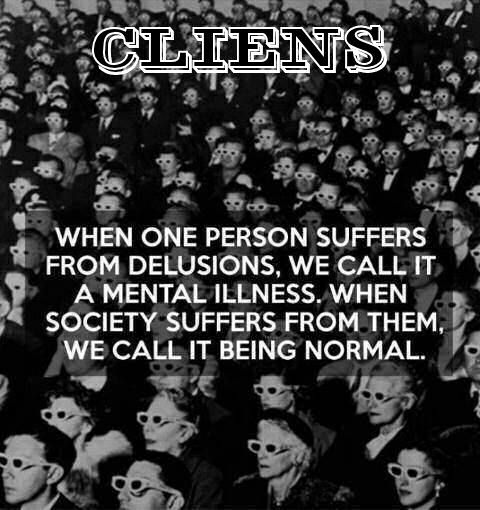
"Insurance companies are
profit making corporations operating
in a market economy trying to outdo their competitors." - Donald Schwartz
MD
"The very word
insurance hints at the
assumption that
life can indeed be made secure, that the unsure can be made sure." - Charles
Eisenstein
"All across the country, insurance companies of
every sort have attempted to reduce their risk by increasing rates, dropping
customers who submit claims and, as a final insult, denying legitimate claims.
If there ever was a definition of
a criminal
enterprise, the modern American
insurance industry fits the
bill!" - Carl Schellenberg 10/28/07
Insurance companies are owned and operated for the benefit of
transnational elite, not to
'protect' the individual from financial calamity.
In the second
quarter of 2007 Berkshire Hathaway
Inc. reported record earnings, mostly from it's insurance division, of $3.1
billion ($3,100,000,000).
Berkshire Hathaway Inc. made over a billion
dollars a month basically by selling insurance.
Homeowner's Insurance
Two retired women,
Linda Williams and B. Walker were sued by a neighbor, Juanita Wasson, who
suffered a broken hip after being knocked down by their automatic garage door.
Farmers insurance defended the homeowners association, to which
Williams and Walker belonged, but filed a cross compliant against them
believing that they did not have the resources to fight in court. The two women
maxed out there credit
cards to hire lawyers and won a $ 8.3 million award against Farmers
insurance as punitive damages for
breach of good faith.
"I became aware that many adjusters employed
by Allstate were engaging in conduct which was
improper, unlawful,
fraudulent, and in bad faith.
I became aware of cases in which the
adjuster retained an engineer and requested that the engineer provide a report
determining and detailing the cause and extent of the damage caused by the
earthquake.
Allstate's adjusters were requiring engineers to provide a
draft or preliminary report for the adjuster's review.
Where an
engineer's draft report attributed any amount of damage, in the adjuster's
opinion, that could possibly have been exacerbated by the earthquake and/or
damage which may not be covered under the policy according to the adjusters,
the adjuster would instruct the engineer to alter the report to reflect the
adjuster's changes.
Engineers were repeatedly instructed to alter draft
reports in order to minimize the damage attributable to covered losses in order
to reduce any potential payments to the insured and in order to benefit
Allstate's financial interests."- Allstate claims analyst Jo Anne Lowe
commenting on the Northridge earthquake of 1/17/94 in
California.
April 2007 Jury verdict rendered
in a case against Allstate.
Allstate was ordered to pay over $2 million
to a Louisiana homeowner who sued the insurer for manipulating an engineering
report to reduce its payment in the aftermath of
Hurricane
Katrina.
November 7, 2007 Lousiana
attorney general Charles Foti sues Allstate, State Farm, Lafayette Insurance
Co., USAA Casulity Insurance Co., Farmers Insurance Exchange, Standard Fire
Insurance and other insurance companies for colluding to reduce claim values.
A consulting firm, McKinsey & Co. was accused of being the
architect of sweeping changes in the insurance industry beginning in the 1980s.
McKinsey advised insures to "stop 'premium leakage' by undervaluing claims
using the tactics of deny,
delay and defend."
The insurance companies coerced policy holders into
settling damage claims for less than their actual value by editing engineering
reports, delaying payments and forcing policyholders to go to court to
challenge insurance estimates of loss after Hurricane Katrina and Rita.
Vehicular Insurance
2007 23 year-old Ashley Ellis hits a man on a motorcycle two
days after her auto insurance expired. Ashley Ellis is not impaired or speeding
but is distracted by her dog which is
riding in the car.
For her negligence Ashley
Ellis was convicted of a misdemeanor and ordered to spend 30 days incarcerated.
She lost forty pounds, originally 125, from the time of the accident waiting to
be incarcerated - about two years.
After two days in jail she died from
lack of medical treatment which was provided by the independently contracted
corporation Prison Health Services.
For Ashley Ellis a 30 day
jail sentence became a death sentence.
Flaws in Vermont's prison medical system were fatal for Ashley
Ellis
"Profit-driven organizations
are prone to cut costs. The system failed." - Matthew
Valerio
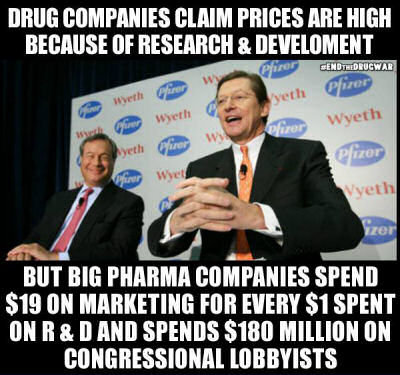
Health
Insurance
"The insurance contracts state clearly if
anything in the application is incomplete, coverage may be rescinded." -
Tom Epstein, BlueSheild
In California it is nearly impossible to
purchase individual health insurance (not employer provided) unless you have
never had surgery,
allergies,
asthma, ear infections,
ulcers or been depressed.
"According to regulators' postings, rejection letters and interviews
with insurance brokers, conditions that can lead to outright rejection or a
higher premium include:
AIDS,
allergies,
arthritis,
asthma,
attention deficit disorder,
autism, bed-wetting,
breast implants,
cancer, cerebral palsy,
chronic bronchitis,
chronic fatigue
syndrome, chronic sinusitis, cirrhosis, cystitis,
diabetes,
ear infections,
epilepsy, "gender
reassignment" (an
impossibility in reality),
heart disease,
hemochromatosis, hepatitis, herpes,
high blood pressure,
impotence,
infertility,
irritable bowel
syndrome, joint pain, kidney infections,
lupus, muscular dystrophy,
migraine,
miscarriage, pregnancy,
"expectant fatherhood," planned adoption, psoriasis, recurrent tonsillitis,
renal failure, ringworm,
severe mental disorders, sleep apnea,
stroke, ulcers and varicose
veins." - Lisa Girion
"Insurance companies are offloading sick people
onto the county system. They want a guarantee that they are going to make
money. That's why they won't take sick people. They are missing the point about
assuming some risk." - Scott Svonkin
Insurance companies refuse to
underwrite individual health insurance policies for people that are
employed in - controlling air traffic; moving buildings; chemical and rubber
manufacturing; circus or carnival work; concrete or asphalt work; crop dusting;
firefighting; furniture and fixtures manufacturing; as a lumber jack; oil well
and refinery operations; police work; roofing; sandblasting; sports; stables;
stockyard; stunt work; telecom installation; transportation; tree trimming;
tunnel excavation; war reporting and
washing windows higher than three stories up.
2005 Insurance industry amassed record profits
of $44.8 billion ($44,800,000,000) in a year of catastrophic
loss.
"Unless insurers can get relief you are going to see a
pullback by private industry."- Robert P. Hartwig, chief economist of the
industry funded Insurance Information Industry
$44.8 billion
profit is penny ante stuff to these
rough riders of catastrophic
calamity.
$44.8 billion is just not the return that the insurance
industry expected on their difficult
to understand legalize laden, layers of lawyers approved insurance
policies.
Barbara Fowler
2001 Senior analyst in charge of rescissions reviews for
Health Net, was expected to cancel 15 policies a month. Barbara Fowler
exceeded her quota by canceling 275 policies.
2003 Barbara Fowler saved Health Net $6 million by
canceling 301 policies.
2005 Health Net set a goal for Barbara Fowler to save
Health Net $6.5 million which she exceeded. Barbara Fowler's bonuses
ranged from $1654 to $6300 for canceling health insurance policies of
individuals experiencing expensive medical costs.
"It is disgusting how
Health Net dropped a patient in the midst of
chemotherapy. Barbara
Fowler, Health Net's "senior analyst in charge of rescission reviews"
profited from it through bonuses. How many years in medical school did Barbara
Fowler study?" - Bill D. Holder
"No surprise that Health Net
gave out bonuses to drop sick insurance policyholders. The for-profit health
insurance industry will always be the winner, as it has to be." - Sheila Hoff
November 2007 Health Net agrees to pay a
$1 million fine and promised to no longer link compensation to coverage
cancellation.
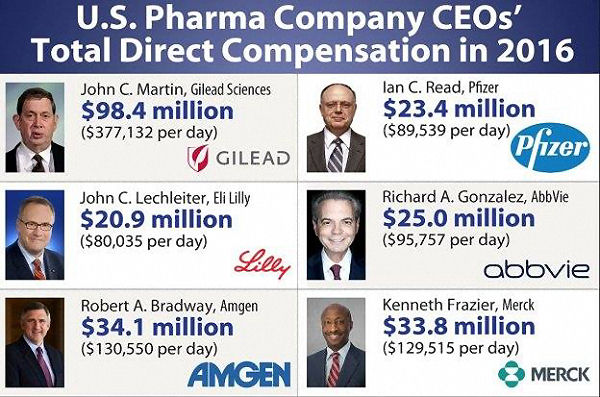
drug insurance
"As long as the word "insurance" is a part of the
American healthcare system, there will be no real reform. It is immoral and
inhumane that we use healthcare as a vehicle to support private industry,
specifically the insurance and pharmaceutical industries. These
companies earn obscene profits and fat salaries for their leaders, who make
huge donations to politicians to ensure their continued financial health." -
Susan Guilford Underwriting guidelines
for several individual health insurance plans list certain drugs that are
likely to render the user ineligible for health insurance. The question then
becomes - are the drugs in and of themselves harmful or does use of the drugs
truly point to underlying conditions that frighten insurers away?
Either
way it seems to be in the individuals best interest to not be using any of the
listed drugs unless it is quite obvious that not using the listed drug brings
on life threatening conditions.
Individuals may be refused individual
health insurance coverage if they use any of the following drugs:
cholesterol reducers -
Lipitor®, Zocor®;
digestive tract problems - Nexium®,
Prevacid®, Protinix®,
Tagamet®;
asthma control - Advair®, Singulair®;
depression control -
Zoloft®, Celexa®, Prozac®;
attention deficit disorder control -
Concerta®, Ritalin®
allergy control - Allegra®;
acne control - Accutane®;
arthritis pain control - Celebrex®;
herpes control - Famvir®;
angina control - Imdur®;
migraine control - Imitrex®;
fungal control - Lamisil®;
menstrual disorders - Parolodel®;
hyperthyroid disorder -
Tapazole®;
epilepsy control -
Topamax®.
"It
is an egregious mistake to think that the mission of health insurance companies
is to provide healthcare for the seriously ill. Commercial insurers fulfill
their legal and corporate mission by making profits for their investors, not by
providing care for the expensively ill." - John W. Glaser
"A
congressional committee found that Fortis, now known as Assurant, and two other
companies alone saved more than $300 million over five years by dropping policy
holders when they became ill.
The death toll from the inability of
millions of Americans to obtain and keep affordable health insurance is
unconscionable.
This national tragedy should
shock us to the bone when we realize
that every year, six times as many Americans die because they can't get medical
insurance than were killed by terrorists on 911." - Andrew Skolnick, September
24, 2009
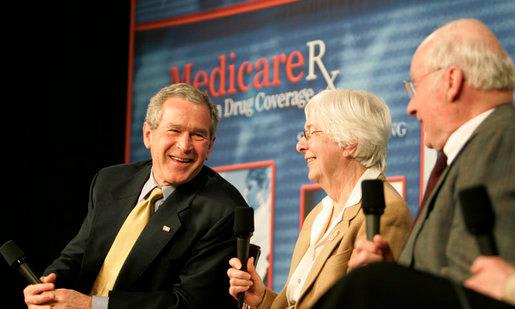
2003 medicare prescription drug
law
2003
Corporate special interests, including HMOs and pharmaceutical corporations,
dished out $141 million for 952 lobbyists - nearly twice as many lobbyists as
there are members of Congress - to make sure that the Medicare bill was written
for the benefit of large insurance and drug companies, as opposed to the health
needs of American citizens.
Nearly half of these lobbyists were
former employees of
the federal
government, including 30 former members of Congress, and at least 11 top
staffers who left federal administration to lobby for the pharmaceutical
industry and HMOs.
Many of the government officials who work to get the
legislation approved by Congress go on to jobs in the
very corporations that profit
from the legislation.
Tom
Scully, a former administrator of the Medicare
program, actually negotiated future employment with corporations that stood
to benefit handsomely from the pharmaceutical law, while actively promoting the
legislation.
Another six top congressional staffers at the center of
negotiations over the Medicare bill became lobbyists for pharmaceutical
companies or HMOs.
Would it surprise anyone
that 21 executives and lobbyists from HMOs and the pharmaceutical industry
served as major fundraisers for George Walker Bush's presidential campaigns,
collecting at least $100,000 ("Pioneers") or $200,000 ("Rangers") for the 2000
or 2004 campaigns?
May 2004
Pfizer /Warner-Lambert agreed to pay
$430 million to resolve civil and criminal charges that it defrauded Medicaid
by engaging in an aggressive and complex scheme to illegally promote
Neurontin® for at least 11
off-label uses.
July 2004 Schering-Plough agreed
to a criminal fine of $52.5 million, $117 million to settle state claims, and
nearly $176 million to settle federal claims for fraud in the pricing of
Claritin® sold to the Medicaid program.
December
2004 HealthSouth, the
nation's largest provider of rehabilitative medicine services, agreed to pay a
fine of $325 million to settle allegations that the company systematically
defrauded Medicare and other federal healthcare programs.
Gambro
Healthcare agreed to pay $310.5 million to resolve civil liabilities
stemming from kickbacks paid to physicians,
false statements made to procure
payment for unnecessary tests and services, and payments made to Gambro
Supply Corporation, a sham 'durable' medical equipment subsidiary.
The Gambro Supply Corporation is permanently excluded from the
Medicare program.
October 2005 Serono
agreed to pay $704 million to settle a fraud case involving
Serostim® which included
kickbacks to doctors for
prescribing Serostim®, kickbacks to
specialist pharmacies for recommending Serostim®,
illegal off-label
marketing, and non-FDA approved diagnosis equipment designed to spur more
Serostim prescriptions.
Serostim® costs $20,000 for a three-month
regime.
June 2006 St. Barnabas Healthcare
agrees to pay $265 million for inflated "outlier" Medicare
payments.
July 2006 Tenet Healthcare
agrees to pay $900 million for billing violations that include manipulation of
outlier payments to Medicare, as well as kickbacks, upcoding, and bill padding.
August 2006 Schering-Plough agrees to pay a
total of $435 million to resolve criminal charges and civil liabilities in
connection with illegal sales and marketing programs for
brain tumor medication
Temodar®, and
Intron-A® which is used in the treatment of bladder
cancer and hepatitis C.
The Schering settlement also covers best price
violations related to Claritin
RediTabs® (an antihistamine), and
K-Dur®, used in the treatment of ulcers.
September
2007 Bristol-Myers Squibb
agreed to pay $515 million to settle allegations involved pricing and
promotional activities for more than 50 drugs, 13 drugs of which made up 69% of
Bristol-Myers'
2007 pharmaceutical revenue of $10.7 billion, including the blood thinner
Plavix®,
antiPsychotic
Abilify®, the cholesterol treatment
Pravachol®, the cancer therapy
Taxol®, and the
antidepressant,
Serzone®.
January 2008 Under the False Claims Act
Merck settled $650,000 for pricing fraud, taking kickback and violating
Medicaid best price regulations for
Vioxx® (an arthritis drug),
Zocor® (a cholesterol drug),
Pepcid® (an acid-reflux drug),
Cozaar® (a hypertensive medication),
Fosamax® (a bone loss drug)
Maxalt® (a migraine medication) and
Singulair® (an asthma medication).
March 2008 Amerigroup was found liable for
discriminating against pregnant women who were supposed to be recruited into a
state-sponsored Medicaid HMO.
Amerigroup settled allegations for
$225,00,000.
Wendell
Potter
"I'm the former insurance industry insider now speaking
out about how big for-profit insurers have hijacked our
health care system and
turned it into a giant ATM for Wall
Street.
In recent years I had grown increasingly uncomfortable
serving as one of the industry's top PR executives.
I also served on a
lot of trade association committees and industry-financed coalitions, many of
which were essentially front groups for insurers.
So I was in a
unique position to see not only how
Wall Street analysts and
investors influence decisions insurance company executives make but also
how the industry has carried out behind-the-scenes PR and lobbying campaigns to
kill or weaken any health care reform efforts that threatened insurers'
profitability.
What I saw happening over the past few years was a
steady movement away from the concept of insurance and toward "individual
responsibility," a term used a lot by insurers and their ideological allies.
This is playing out as a continuous shifting of the financial burden of
health care costs away from insurers and employers and onto the backs of
individuals.
If they are unfortunate enough to become seriously ill or
injured, many people enrolled in these plans find themselves on the hook for
such high medical bills that they are
losing their homes to
foreclosure or being forced into bankruptcy.
As an industry
spokesman, I was expected
to put a positive spin on this trend that the industry forged and
euphemistically refers to as "consumerism" and to promote so-called
"consumer-driven" health plans.
Insurers want to preserve the image they
are working so hard to cultivate - as
a group of kind and caring
folks who think only of you and your health.
I ultimately reached
the point of feeling like a huckster.
I thought I could live with being
a well-paid huckster and hang in there a few more years until I could retire.
I probably would have if I hadn't made a
completely spur-of-the-moment decision a couple of years ago that changed
the direction of my life.
While visiting my folks in northeast
Tennessee where I grew up, I read in the local paper about a health
"expedition" being held that weekend a few miles up US 23 in Wise, Virginia.
Doctors, nurses and other medical professionals were volunteering their
time to provide free medical care to people who lived in the area.
That
50-mile stretch of US 23, which twists through the mountains where thousands of
men have made their living working in the
coal mines, turned out to be
my "road to Damascus."
Nothing could have prepared me for what I saw
when I reached the Wise County Fairgrounds, where the "expedition" was being
held.
Hundreds of people had camped out all night in the parking lot to
be assured of seeing a doctor or dentist when the gates opened.
By the
time I got there, long lines of people stretched from every animal stall and
tent where the volunteers were treating patients.
That scene was so
visually and emotionally stunning it was all I could do to hold back
tears.
How could it
be that citizens of the richest nation in the world
were being treated this way?
I realized that the reason those people in
Wise County had to wait in long lines to be treated in animal stalls was
because our Wall Street
driven health care system has
forged one of the most inequitable health care systems on Earth.
I did
not make a final decision to speak out as a former insider until recently when
it became clear to me that the insurance industry and its allies (often
including drug and medical
device makers, business groups and even the American Medical
Association) were succeeding in shaping the current debate on health
care reform.
I heard members of Congress reciting talking points like
the ones I used to write to scare people away from real reform.
Whenever you hear a politician or pundit use the
term "government-run health care"
and warn that the creation of a public health insurance option that would
compete with private insurers (or heaven forbid, a single-payer system like the
one Canada has) will "lead us down the path to
socialism," know that the original source of the sound bite most likely was
some flack like I used to be." - Wendell Potter
"Americans for
Quality and Affordable Healthcare" (AQAH) is a "secretive" group that
organizes "below-the-radar" activities to drum up opposition to
health care reform.
AQAH is operated by one of the largest law firms in North Carolina,
Moore and Van Allen.
The pharmaceutical industry-funded front group
Center for Medicine in the Public Interest (CMPI) is helping its
corporate funders fight health care reform by
disseminating
misinformation and orchestrating campaigns to
generate fear about health care reform.
CMPI arose out of the
Pacific Research Institute, a corporate front group that worked with
Philip Morris in the past to fabricate academic support for the tobacco
industry.
The Chamber of
Commerce sponsored online pop-up ads to generate the appearance of
"grassroots" opposition to health care reform.
The Chamber contracts
with a public relations
firm which in turn subcontracts with an online marketing firm that
coordinates the tasks of generating the ads and signing people up for the
Chamber's campaign.
The ads tell readers that if they complete a survey
and give their names and personal information, they will get a $150 American Express Gift Card
for use at Hooters Restaurants.
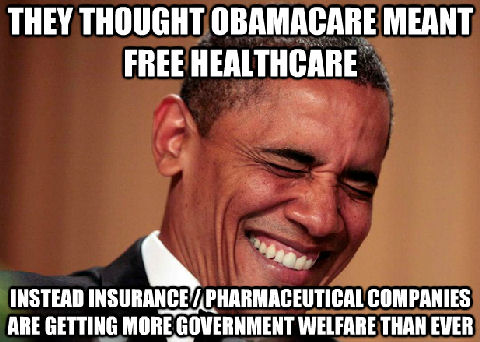
reinsurance
" Liabilities may be imminent or distant, and a
fixed rule which imposes the same reserve for both will sometimes err by
excess, and sometimes by defect."- Walter Bagehot, Lombard Street: A
Description of the Money Market,
1873For nearly three hundred years, Lloyd's of London insurance
policies were backed by wealthy British investors, who came to be known as
"Names" because, in the early days, their signatures were written on the face
of each Lloyd's policy.
The Names participated in one-year venture
syndicates, to insure risks, chiefly in maritime insurance.
Each Name
pledged his entire personal wealth to back up his share in the syndicate's
policies.
The syndicates accepted business for one year, then allowed
two more years for claims to come in and be settled.
Each syndicate
closed its "year of account" and wound up its affairs after the end of the
third year.
The Names received their share of the profits, or paid
their share of the losses, and
their liability
ended.
If, however, all claims could not be settled by the end of
the third year, the syndicate had to remain "open" and the profits or losses
could not be shared among the Names until all claims were finally settled.
This system was efficient and profitable in maritime business; the
outcome of any given voyage was almost always known within the year of account,
and settled within three.
As both commerce and insurance grew more
complex, and especially as Lloyd's expanded into non-maritime business,
syndicates found they could no longer close their affairs after only three
years.
Staying open longer, however, and thus delaying the distribution
of profits, would threaten their financial base: Names might well look
elsewhere for more reliable investments with more rapid returns.
Lloyd's solution was to have each closing syndicate reinsure its
remaining risks with a syndicate from the next year of account.
For a
premium paid, a still-open syndicate, during its third year, would assume any
remaining Incurred But Not yet Reported ("IBNR") liabilities of the closing
syndicate from the prior year by issuing it a specialized policy of
Re-Insurance To Close ("RITC").
Lloyd's syndicates could thus continue
distributing profits after three years, instead of having to radically alter
their long-established and familiar business procedure.
When this RITC
developed, there were only a few thousand members of Lloyd's, of whom perhaps a
thousand, known as "working Names", actually conducted the business of Lloyd's
insurance market.
The rest ("external" Names) relied on their syndicate
managing agents to protect their interests, by carefully evaluating each risk
accepted, and by calculating the RITC in such a way that neither excessive
profit nor loss was realized by the Names on the old syndicate or the new
syndicate.
It was extremely important that RITC be calculated fairly,
because the individual Names who made up those syndicates were not necessarily
the same people.
In order to carve out a share of the U.S. insurance
market while a "buy-American" attitude prevailed in the 1930's, 1940's and
1950's, syndicates at Lloyd's issued many broadly worded policies, without
monetary limits, insuring and reinsuring risks in the United States.
The loose language of these policies gave Lloyd's a temporary
competitive advantage over many U.S, carriers; however, these overly generous
policies eventually came back to haunt them.
By the 1960's and 1970's it was clear to a handful of the
highly placed working Names that
claims due to
asbestos, pollution and other health hazards (so-called "APH" losses) were
ripening into lawsuits in which unanticipatedly large damages were being
awarded by American courts.
American companies turned to their
insurers, and their insurers turned to their reinsurers, who in very many cases
were syndicates at Lloyd's.
An avalanche of
claims was thus working its way through the courts and down the chain of
reinsurance obligations, toward the Lloyd's syndicates that held the RITC
policies issued to the syndicates who, in prior years, had written the
original, broadly worded policies.
The avalanche was moreover
apparently going to continue well past the year 2000.
Since the
original policies were written without monetary limits, the Names backing the
syndicates that had assumed
liability for these policies through the annual RITC process were facing
financial ruin, and Lloyd's ability to "pay all claims" was in jeopardy.
The Names would soon be personally liable for coming claims far in
excess of their original investments in Lloyd's syndicates, and apparently in
excess of their combined wealth besides.
If word got out about the
magnitude of the undisclosed liabilities latent within numerous syndicates at
Lloyd's, incoming investment would cease, and Lloyd's would become extinct.
In the early 1970's the ruling Committee of Lloyd's lowered the minimum
net worth requirement for Names to $150,000 in assets, and opened membership at
Lloyd's to the British upper-middle class, and foreigners, especially American,
Canadian, Australian, and South African citizens, in which countries Lloyd's
had an excellent reputation.
Lloyd's began recruiting large numbers of
new Names, and in 1973 even allowed women to join.
Lloyd's also placed
a new layer of
bureaucracy, known as "members' agents", between the external Names and the
syndicate managing agents.
By their Agreement with Lloyd's, the
external Names were strictly passive investors who
delegated all
authority to conduct insurance business to their member's and managing
agents, who placed the Names on syndicates and otherwise handled all their
business at Lloyd's.
The formerly close and trusting relationship
between Names and their managing agents disappeared.
Many of the
aristocrats who had been Names on the threatened syndicates before 1970 also
quietly "disappeared" as soon as RITC had been contracted for them, either
resigning from Lloyd's altogether or moving to "safe" syndicates.
There
were about 6,000 Names in 1970.
None of the new Names were told of the
billions in losses sliding inexorably down the chain of reinsurances toward
them.
[By 1990, although nearly 31,000 new Names had been recruited, the
total number had only risen to about 33,000. Two thirds (over four thousand) of
the "old" Names had quietly got out of harm's way.]
The members' agents
for the new external Names (and some unwitting old Names) placed them on the
endangered syndicates' next year(s) of account by the hundreds.
The
managing agents passed the old syndicates' massive undisclosed liabilities to
select syndicates populated by "new" Names via
inadequate RITC, distributed
money that was deemed to be "profits" to the Names on the closing syndicates,
and paid themselves handsomely.
In August 1980, a formal study group of
insiders, called the "Asbestos Working Party," was established at
Lloyd's to formulate a strategy to deal with
the ever-growing and
ever-more-difficult to conceal problem of asbestos claims.
In October 1980, the United
States Court of Appeals for the Sixth circuit announced its decision in INA
v. Forty-Eight Insulations, Inc. holding that
every exposure to asbestos
fibers was a separate harm, and that every insurer along the way during the
entire period of exposure,
which might be twenty years or more, had a duty to defend and indemnify.
In response, Lloyd's inner circle continued to conceal their knowledge
of the massive impending losses, and
intensified the aggressive
recruitment of more and more external Names, which was being conducted at
their direction by members' and managing agents, in what became known as the
"recruit to dilute" campaign.
Syndicates continued to under-reserve
and/or inadequately
reinsure for incurred but not reported losses, thus hiding the coming
losses and maintaining an illusion of profitability.
In 1982, Lloyd's
persuaded Parliament to pass a Private Act, the Lloyd's Act of 1982, granting
Lloyd's immunity from most
lawsuits (much like government agencies have).
The Lloyd's Act of
1982 also gave the Council of Lloyd's the power to unilaterally and even
retroactively change Lloyd's by-laws, which formerly could only be done by
majority vote of the Names at a General Meeting.
The extent and
implications of Lloyd's (effectively complete) legal immunity, and the
Council's by-law-changing powers
were kept secret from the Names for another nine years, until 1991 (the
year that losses for the 1988 year of account first became public knowledge).
In late 1986, for the upcoming 1987 year of account, Lloyd's required
all Names to sign a new General Undertaking, that included "choice of forum"
and "choice of law" clauses in which the Names unwittingly agreed that any
legal disputes with Lloyd's would be brought in English courts under English
law.
Lloyd's explained the new Undertaking as a procedural
technicality, and did not tell the Names that Lloyd's was by fiat of Parliament
effectively immune from suit in England.
In 1986, Lloyd's also required
that all Names sign a new Members Agency Agreement.
In stark contrast
to the minimal disclosures Lloyd's made concerning the General Undertaking,
extensive, detailed explanations of the implications of the new agency
agreement were given to Names prior to the deadline to sign it.
Lloyd's
premium capacity increased dramatically as a result of the exponential growth
in the number of Names, but Lloyd's brokers and managing agents were not
generating that much new business.
To keep all
the Names' capital "in play", and thus keep the 30%
deposits required for
underwriting in place, the syndicate managers cleverly absorbed the excess
capacity in a "reinsurance spiral" (properly, "retrocessional spiral"):
syndicates reinsured other syndicates, then sought reinsurance on that
reinsurance from other syndicates, who then did the same with still others,
taking fees and commissions "off the top" each step of the way, in what became
known as the "LMX" spiral.
(Although "LMX" is an acronym for "London
excess of loss market", it
has in hindsight been euphemistically referred to as the "London excess of
capacity market.)
The limited information in the Names' financial
statements made it appear that
their investments were doing
very well.
In actuality, since each Name's risk was spread across
multiple syndicates, the "turns" of the spiral tended to re-focus their risk
back on themselves.
The members' agents and managing agents on the
various syndicates had in fact put many of the Names in the position of
repeatedly reinsuring themselves.
The illusion of Lloyd's as a sound
investment could thus be, and was, maintained for several years.
Lloyd's syndicates wrote their usual "book" of business, capable of
maintaining the appearance of stability as long as all was calm; but when (not
"if") major catastrophic losses occurred, those affected syndicates and their
Names were doomed.
The commissions taken "off the top" by all the brokers in the spiral
had eaten away the premium reserves.
The reserves that remained were
dangerously low - as low as 35% of premium in many instances.
That is
why "typical" disasters such as hurricanes and oil rig fires resulted in
"atypical" and exponential losses in the late 1980's and early 1990's.
The unwitting new Names, who believed they were investing in one of the
world's oldest and safest institutions,
were left to bear the losses when they hit, and hit they did, with a vengeance.
In 1991, Lloyd's announced losses of 500 million pounds ($800 million),
at the time, this was the largest single-year loss in its history (by 1995 the
cumulative loss had grown to $15 billion even by Lloyd's unaudited accounting
figures).
Lloyd's paid out premium reserves at first, and then began
making cash calls on the Names on the affected syndicates, not only to cover
the outstanding claims, but to amass reserves to pay the IBNR claims that would
come due against syndicates in the future.
It was generally agreed that
any Names on a syndicate insuring or reinsuring APH risks was financially
ruined the day they were placed on it by their agents.
The premium
reserves of hundreds of syndicates were exhausted by the end of the traditional
three-year accounting cycle.
The syndicates could not close, and the
Names bore unlimited personal responsibility for all the future (and still
unquantifiable) claims.
APH claims are expected to continue to flow
into Lloyd's until the year 2030 and possibly beyond.
Since 1991,
thousands of Names have been bankrupted, and more than 30 have committed
suicide.
Lloyd's
has continued to make cash calls, and English courts have continued to issue
rulings in Lloyd's favor, making it easier for Lloyd's to collect more and more
money from the remaining Names and/or their estates.
BASICS OF
FRAUD:
In legal terms, there are five elements to a fraud:
"Scienter", or knowledge of facts, events, or circumstances by one
party;
Misrepresentations (including non-disclosure) of that knowledge
by that party in dealings with another;
Reliance on those
misrepresentations by the second party;
An agreement, contract, or
transaction between the parties which a reasonable person would not have
entered into if privy to the first party's knowledge;
Harm or
damage to the second party as a result.
English Justices, even at the
appeals level, have acknowledged on the record that there was ongoing fraud at
Lloyd's, but they nonetheless have thus far decided every case and every point
of law in Lloyd's favor.
The UK courts have even gone so far as to rule
that Names cannot use fraudulent non-disclosure and/or fraudulent
misrepresentation as a defense or counter-claim to offset Lloyd's collection
efforts.
http://www.truthaboutlloyds.com/fraud/10minutes.html
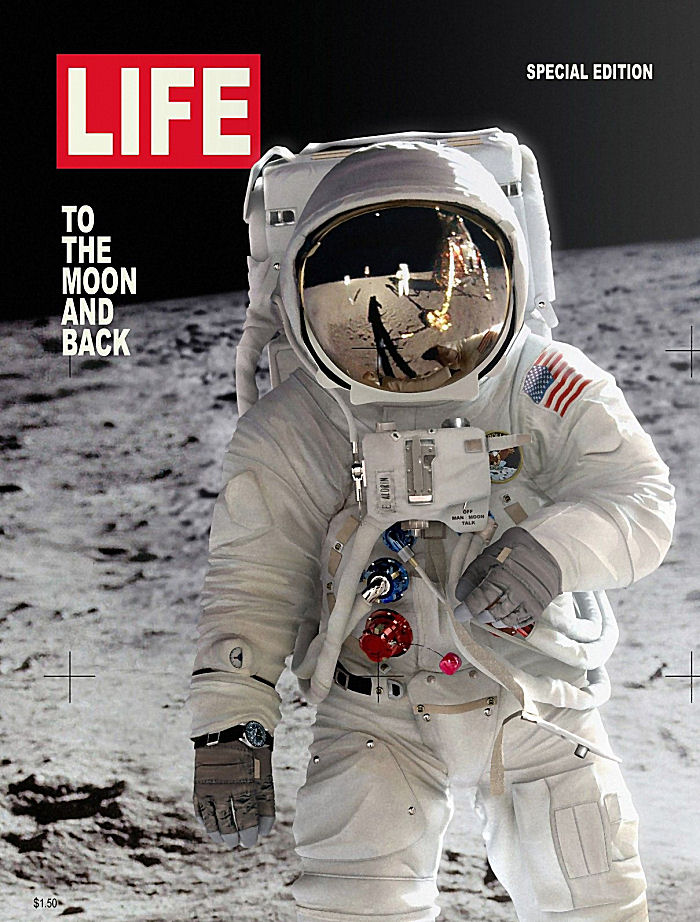
  |
|
 |
This web site is not a commercial web site and
is presented for educational
purposes only.

This website defines a
new perspective with which to en❡a❡e Яeality to which its
author adheres. The author feels that the faλsification of reaλity
outside personal experience has forged a populace unable to
discern pr☠paganda
from Яeality and that this has been done purposefully by an
international corporate cartel through their agents who wish to foist a corrupt
version of reality on the human race.
Religious intolerance
occurs when any group refuses to tolerate religi☯us practices,
religi☸us beliefs or persons due to their religi⚛us
ide⚛l⚛gy. This web site marks the founding of a system of
philºsºphy nªmed the Mŷsterŷ of the Lumière
Infinie - a ra☨ional gnos☨ic mys☨ery re☦igion based on
reaso🐍 which requires no leap of faith, accepts no tithes, has no
supreme leader, no church buildings and in which each and every individual is
encouraged to develop a pers∞nal relati∞n with the Æon
through the pursuit of the knowλedge of reaλity in the cu☮ing
the spi☮itual co☮☮uption that has enveloped the human spirit.
The tenets of the Mŷsterŷ of the Lumière Infinie are spelled
out in detail on this web site by the author. Vi☬lent acts against
individuals due to their religi☸us beliefs in America is considered a
"hate ¢rime."
This web site in no way c☬nd☬nes
vi☬lence. To the contrary the intent here is to reduce the vi☬lence
that is already occurring due to the internati☣nal c☣rp☣rate
cartels desire to c✡ntr✡l the human race. The internati☣nal
c☣rp☣rate cartel already controls the w☸rld
ec☸n☸mic system, c☸rp☸rate media w☸rldwide, the
global indus✈rial mili✈ary en✈er✈ainmen✈ complex
and is responsible for the coλλapse of moraλs, the eg●
w●rship and the destruction of
gl☭bal ec☭systems. Civilization is based on coöperation.
Coöperation with bi☣hazards at the
point of a gun.
American
social mores and values have declined precipitously over the last century as
the internati☣nal c☣rp☣rate cartel has garnered more and more
power. This power rests in the ability to deceive the p☠pulace in general
through c✡rp✡rate media by press☟ng em☠ti☠nal
butt☠ns which have been πreπrogrammed into the
πoπulation through prior mass media psych☣l☣gical
☣perati☣ns. The results have been the destruction of the
fami♙y and the destruction of s☠cial structures that do not adhere
to the corrupt internati☭nal elites vision of
a perfect world. Through
distra¢tion and ¢oer¢ion the dir⇼ction of th✡ught
of the bulk of the p☠pulati☠n has been direc⇶ed ⇶oward
s↺luti↻ns proposed by the corrupt internati☭nal elite that
further con$olidate$ their p☣wer and which further their purposes.
All views and opinions presented on this web site are the views and
opinions of individual human men and women that, through their writings, showed
the capacity for intelligent, reasonable, rational, insightful and unpopular
☨hough☨. All factual information presented on this web site is
believed to be true and accurate and is presented as originally presented in
print media which may or may not have originally presented the facts
truthfully. Øpinion and
☨hough☨s have been adapted, edited, corrected, redacted, combined,
added to, re-edited and re-corrected as nearly all opinion and
☨hough☨ has been throughout time but has been done so in the spirit
of the original writer with the intent of making his or her
☨hough☨s and opinions clearer and relevant to the reader in the
present time.
Fair Use Notice

This site may contain
copyrighted material the use of which has not always been specifically
authorized by the copyright owner. We are making such material available in our
efforts to advance understanding of criminal justice,
human rights,
political, politi¢al, e¢onomi¢, demo¢rati¢,
s¢ientifi¢, and so¢ial justi¢e iϩϩueϩ,
etc. We believe this constitutes a 'fair use' of any such copyrighted material
as provided for in section 107 of the US Copyright Law. In accordance with
Title 17 U.S.C. Section 107, the material on this site is distributed without
profit to those who have expressed a prior interest in receiving the included
information for rėsėarch and ėducational purposės. For more
information see: www.law.cornell.edu/uscode/17/107.shtml. If you wish to use
copyrighted material from this site for purposes of your own that go beyond
'fair use', you must obtain permission from the copyright owner. |
 Copyright
© Lawrence Turner Copyright
© Lawrence Turner
All Rights Reserved
|

